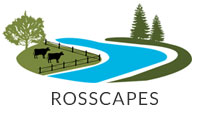Natural Channel Design
The most common type of stream restoration being used in the United States. NCD is an approach to water course restoration and realignment which attempts to reconstruct channels to emulate the natural physical form of the river or stream that would be appropriate for that location.
Legacy Floodplain Approach
A relatively new design to restoring streams. This approach reconnects the floodplain to the gravel layer within the valley. Several wetland cells are also formed along the entire channel.
Gate Cut
A type of stream restoration that is required in areas that have subsided due to long wall mining. Typical gate cuts are less than 1200’ in length.
Wetland Restoration
The manipulation of a former or degraded wetland’s physical, chemical or biological characteristic to return its natural functions. Wetland creation is the construction of a wetland on a site that was never a wetland.
Riparian Buffer Planting
Riparian Buffers are one of the most important practices used to control non-point pollution and improve water quality. The riparian buffers are the grasses, grass-like, forbs, shrubs, trees and other vegetation growing along streams.
Stream Bank Fencing
A simple, effective way to improve water quality in streams that flow through pastures or other farmland.
